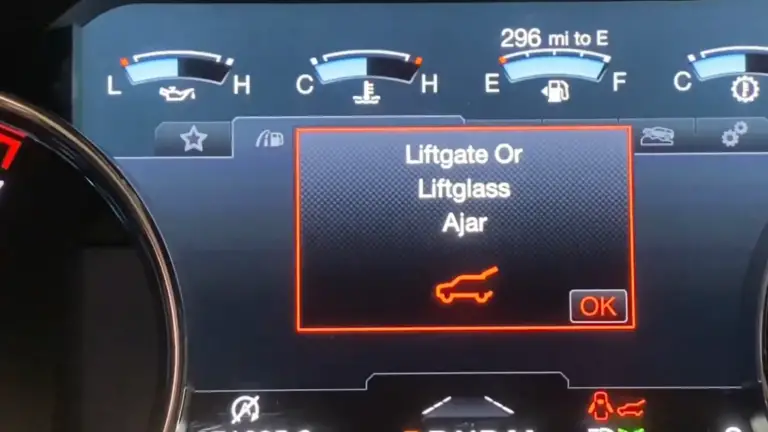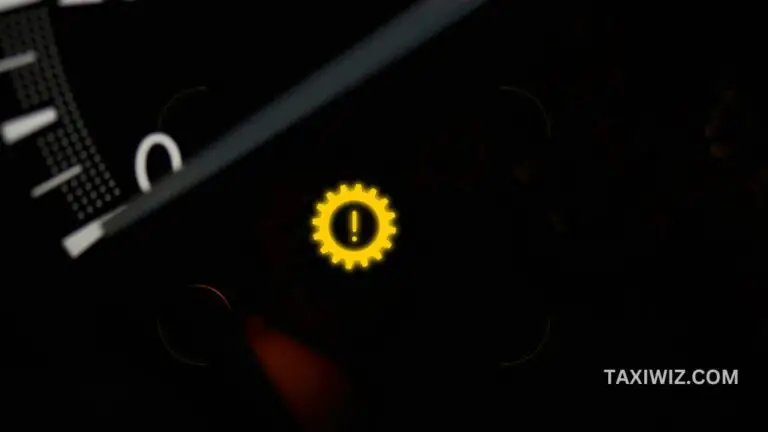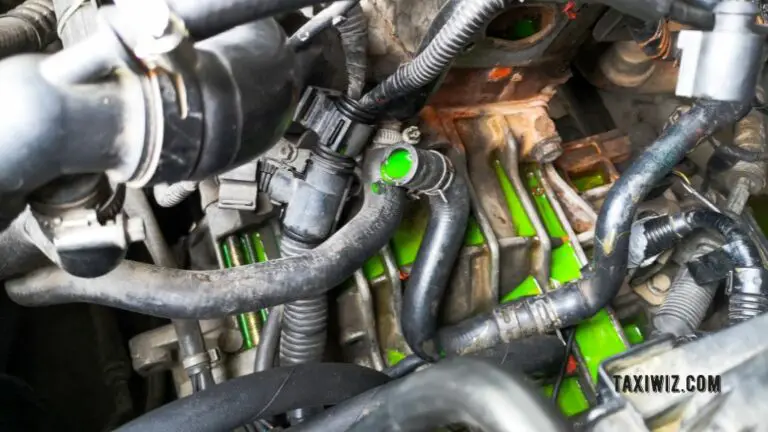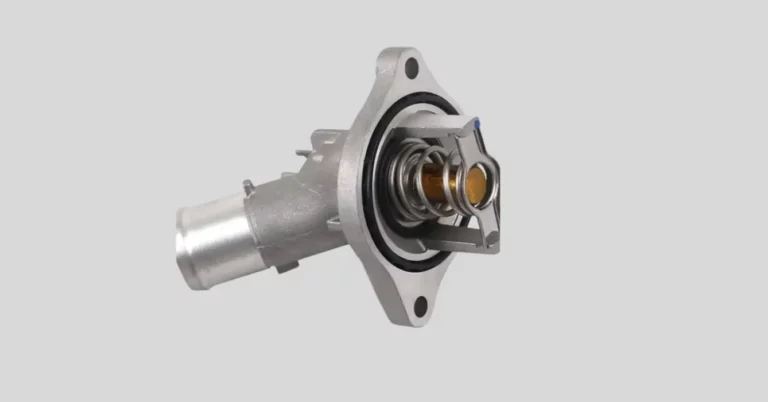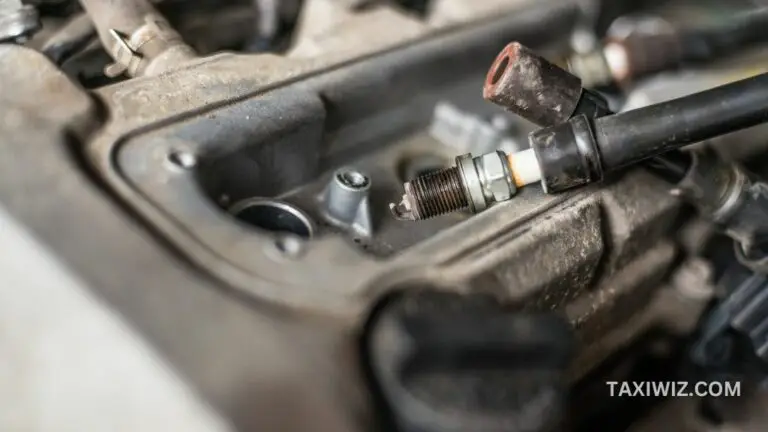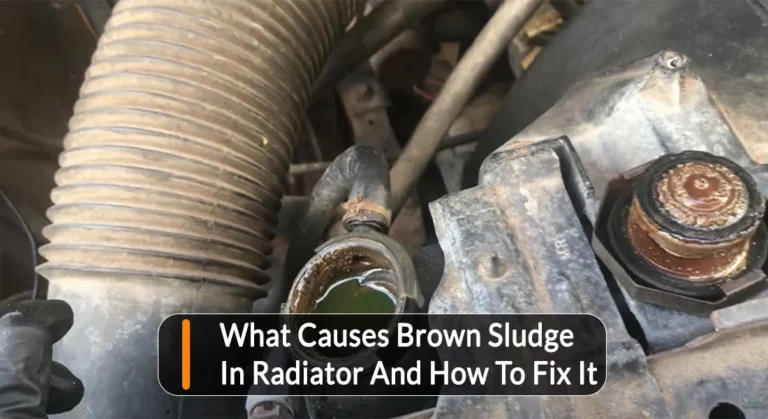Car Leaking Oil Front Passenger Side – Symptoms & What to Do
Regardless of where it’s leaking from, oil leaks are concerning when it comes to a vehicle. However, leaks from different positions can be caused by different reasons, so it’s important to consider where the oil is leaking from.
So, why do you find the car leaking oil front passenger side? There can be different reasons behind this, but mostly it’s because of heater core problems, cracked seals or gaskets, AC condensation, or even loose hoses.
Let’s equip you with all the required knowledge for understanding and even fixing this problem.

How to Identify the Leaking Liquid?
Before jumping to a conclusion, it’s better to recheck if it’s oil that’s leaking from the car. Here’s a small chart that’ll help you identify and take measures accordingly.
| Type of Fluid | Color |
|---|---|
| Water | Transparent |
| Coolants | Blue/Green |
| Gear Oil | Light/Dark Brown |
| Engine Oil | Black/Brown |
| Power Steering Oil | White |
| Transmission Oil | Black/Brown |
| Brake Oil | Yellow |
Once you’ve determined the type of leaking liquid, it’ll be significantly easier for you to determine the cause behind the leak. Because, if it isn’t oil that’s leaking, the solution might just be completely different.
Let’s take a look at several causes that lead to leaking oil in your vehicle.
Causes Behind Car Leaking Oil Front Passenger Side
Here are several issues that may be causing the oil leak down the front passenger side.
1. Bad Turbocharger
Turbochargers are installed in your vehicle to deliver compressed air into the engine. This way, it ensures your vehicle is performing optimally and that there isn’t much pressure on the engine.
However, to work properly, the turbocharger requires oil for cooling purposes as well as lubrication. If the turbocharger cracks in any circumstances, there’s a high chance that the liquid will leak. In this case, the liquid is most likely to leak down the front passenger side.
If you find oil leaking from the front passenger side along with a comparatively rougher performance out of your engine, then chances are that you have a cracked turbocharger.
Fortunately, cracked turbochargers can be repaired if they’re fixed in time. So, don’t delay, otherwise, you’ll have to install a brand-new turbocharger.
2. Faulty Timing Cover
The timing cover keeps the oil from spilling out of the engine. However, over time this can get worn out due to the heat from the engine.
After a considerable amount of wear on the cover, it might open the seal that was keeping the oil from leaking out of the engine.
In this case, the oil is usually found leaking from the front passenger side. Fortunately, this can be fixed easily by buying a new timing cover. The problem is, you need some level of technical know-how for fixing this problem.
If you don’t have that, you’ll have to take the vehicle to a professional for the fix.
3. Faulty Rear Seal
In most vehicles, the main seal is found where the crankshaft and the engine meet. This seal is very crucial because of its position. However, just like the timing cover and any other component of a vehicle, it can wear out over time.
If it does, the oil starts leaking from the vehicle, and it usually is found leaking around the front passenger seat. However, unlike the previous issues, this is way more severe. Due to its position, it can drain the engine oil in no time.
While that’s a drawback, it can also help you ascertain what’s wrong with your vehicle way faster.
If you face a problem with a faulty rear seal, then it’d be wise to replace the seal altogether. Repairing the seal will be a costly process, and you’ll never be able to restore the seal to its former shape. So, it’s better if you replace it.
3. Faulty Adapter Housing Gasket
Vehicles usually come with an oil filter, and the filter is connected to an adapter housing. There’s a seal or a gasket that keeps the oil from spilling out of the adapter housing.
In certain cases, the gasket may get damaged and start leaking oil. Replacing it is easy and affordable, so it should not pose to be a great challenge.
4. Faulty PCV Valve
The PCV valve, or positive crankcase ventilation valve, is a crucial part of any vehicle’s emission system as it regulates the amount of gas flowing between the intake manifold and crankcase.
So, when it malfunctions, it sometimes builds up the amount of pressure inside the valve cover. This eventually leads to the outpouring leak of the fluid.
As it directly affects the engine’s internal pressure, it may lead to problems such as reduced speed, higher fuel consumption, and more emissions, alongside oil leaks.
So, if you’re facing one or many of these problems, chances are we’re dealing with a faulty PCV valve here.
Fortunately, this problem is rather easy to fix. You just have to locate it, remove it from its socket, and shake it till you clean up any clogs. Reinstall it back in and try driving your car again, and you’re likely to find it fixed.
In case you don’t, it’s better to visit a professional and get it replaced.
5. Faulty Oil Filter
A lot of vehicle owners don’t maintain their oil filters, and this leads to a plethora of problems over time. The oil filter has to be cleaned regularly because it collects a lot of dirt and grime over time.
If left unchecked for too long, the filter tends to lose its effectiveness. Sometimes, you might even fail to reinstall it properly after cleaning it.
So, if your car’s oil is leaking, you better check the oil filter and clean it if necessary.
Oil Puddle Under Your Car or Truck? How to Track Down Oil Leaks! >> Check out the video below:
Frequently asked questions (FAQs)
How much does it cost to fix a front oil leak?
It can cost you something between 300-1000 USD. The repair cost varies depending on the car brand or model.
Is it alright to drive a car with an oil leak?
No, it’s not as it can lead to a fire accident.
Can an oil leak destroy an engine?
Yes, in fact, it’s one of the primary reasons for engine problems.
Conclusion
Car leaking off the oil front passenger sideis an issue that requires an immediate response, otherwise, you may end up with a long-lasting problem that requires additional expenses for a fix.
So, if you see an oil leak, look for the indicators mentioned here and take appropriate steps as soon as possible.

